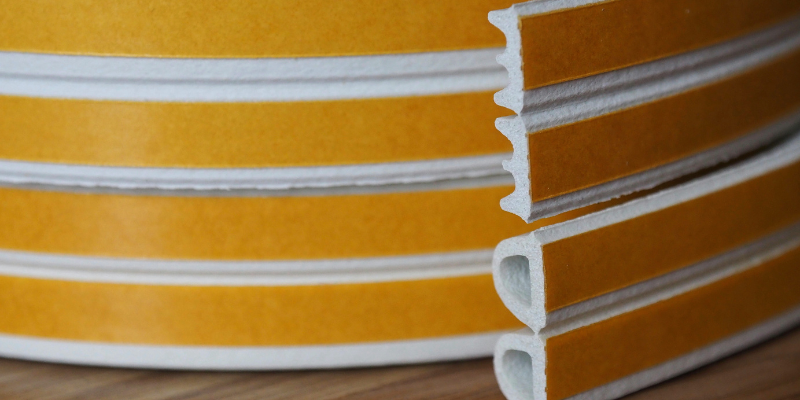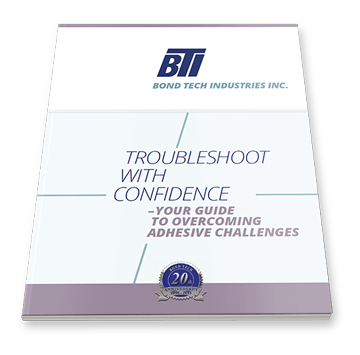Cold weather presents unique challenges for the application of water-based adhesives, which are commonly used in various industries for their eco-friendly properties and strong bonding capabilities. The performance of these adhesives can be significantly impacted by low temperatures, affecting their curing process, bond strength, and overall durability.
Here, we discuss the critical aspects of using water-based adhesives during cold weather, including best practices for storage and application, the role of manufacturing processes and additives, and how to ensure optimal performance even in challenging conditions.
The Challenges of Using Water-Based Adhesives in Cold Weather
Evaporation
Water-based adhesives depend on the evaporation of water to cure and form a solid bond. This process is highly sensitive to temperature. During cold weather, evaporation rates are lower, which extends curing times and results in a weaker bond overall.
Ultimately, if temperatures drop too low, the adhesive may not cure properly, leading to adhesive failure. This can have severe consequences in industries where strong bonds are critical, such as construction, automotive, and packaging.
Viscosity
Another significant challenge faced by industries is the increase in adhesive viscosity. As temperatures drop, the adhesive thickens, leading to slower flow rates and reduced penetration into substrates. This can cause a variety of issues, such as poor adhesion, stringing, and difficulties in machining. To mitigate these problems, it’s essential to implement strategies that maintain the adhesive’s flow properties.
Addressing The Challenges
One effective approach is to condition both the adhesive and the substrates before application. This involves ensuring that all components are brought as close to their ideal temperature and humidity levels as possible.
For example, adjusting pump pressures or using larger application tips can help accommodate the thicker adhesive. Additionally, substrates themselves can impact adhesive performance; cold substrates may chill the adhesive upon contact, further inhibiting its flow and weakening the bond. Therefore, warming the substrates to match the adhesive’s temperature can help maintain consistent bonding performance.
Additionally, using specialized additives or modifying the adhesive’s formulation can improve its performance in colder temperatures. Anti-freeze agents and plasticizers are commonly added to enhance flexibility and prevent freezing, ensuring the adhesive remains functional even when exposed to the cold. Manufacturers might also adjust the adhesive’s formulation to reduce its dependency on water evaporation for curing, making it more suitable for low-temperature environments.
Application Techniques for Cold Weather Conditions
When applying water-based adhesives in cold weather, it is crucial to consider both the ambient temperature and the temperature of the materials involved:
1. Ambient Temperature: Follow specific temperature guidelines for different types of water-based adhesives. For instance, acrylic-based adhesives should be applied when the ambient temperature is 7°C or higher, while other formulations may have higher or lower temperature ranges for their applications. If the temperature is expected to drop below freezing within 72 hours of application, it’s advisable to delay the project to prevent adhesive failure.
2. Surface Temperature: Ensure that the surfaces to be bonded are also within the acceptable temperature range. Cold surfaces can cause the adhesive to cool too quickly, preventing proper curing. Using tools like infrared thermometers can help monitor surface temperatures during application.
3. Rotating Adhesive Stock: To maintain optimal performance, rotate adhesive stock on-site, keeping some containers in a warm environment while others are in use.
This ensures that the adhesive being applied is always at the correct temperature, maximizing efficiency and bond strength.
Best Practices for Storing Water-Based Adhesives in Cold Weather
Proper storage of water-based adhesives during cold weather is also necessary to maintain their effectiveness. Here are the essential storage guidelines:
1. Temperature Control: Store adhesives in their original, unopened containers in a temperature-controlled environment. The ideal storage temperature range is between 15°C and 30°C. Avoid storing adhesives below 5°C as exposure to freezing temperatures can cause irreversible damage, such as separation of components, crystallization, or thickening of the adhesive, which compromises its performance.
2. Warm-Up Time: If adhesives have been exposed to cold temperatures, they should be warmed up to at least 15°C before application. Depending on how cold the adhesive has become, this warming process could take 24 hours or longer. Failure to properly warm the adhesive before use can lead to poor bond strength and uneven application.
3. Use of Heated Storage Solutions: Utilize heated storage solutions like heated warehouses, hot boxes, or heated blankets specifically designed for adhesive containers. This not only ensures that the adhesive remains within the optimal temperature range but also minimizes downtime by allowing for immediate use of the product at the job site.
Advanced Manufacturing Practices and Additives
Manufacturers can enhance the cold-weather performance of water-based adhesives through various practices and the incorporation of specialized additives: · Plasticizers: The inclusion of plasticizers in adhesive formulations can improve flexibility at lower temperatures, reducing the likelihood of cracking or brittleness during application. This is particularly important for applications requiring high flexibility, such as in automotive or construction joints.
· Anti-Freeze Agents: Some manufacturers add anti-freeze agents to water-based adhesives to lower their freezing point, allowing them to remain usable at temperatures that would otherwise cause freezing. These agents can also help maintain a smoother application process in cold conditions.
· Modified Formulations: Advanced adhesive formulations are being developed to accelerate the curing process even in cold environments. These modified adhesives
often rely less on water evaporation and more on chemical reactions that are less temperature-dependent, ensuring quicker and more reliable bond formation.
· Quality Control: Rigorous quality control during manufacturing ensures that each batch of adhesive meets the necessary performance criteria, even in challenging weather conditions. This includes testing adhesives under simulated cold-weather scenarios to ensure they maintain their bonding capabilities.
Work With a Manufacturer Who Understands Your Adhesive Needs
Overcoming the challenges of using water-based adhesives in cold weather requires a strategic approach that includes proper storage, careful application, and advanced manufacturing techniques. By following these best practices, you can ensure that your adhesive applications remain strong and durable, even in the coldest conditions.
For further guidance on selecting the right water-based adhesive for your cold-weather projects or to explore our range of industrial adhesives, contact Bond Tech Industries today for expert advice and tailored solutions. Check the subscription box for expert insights and tips for your applications.






